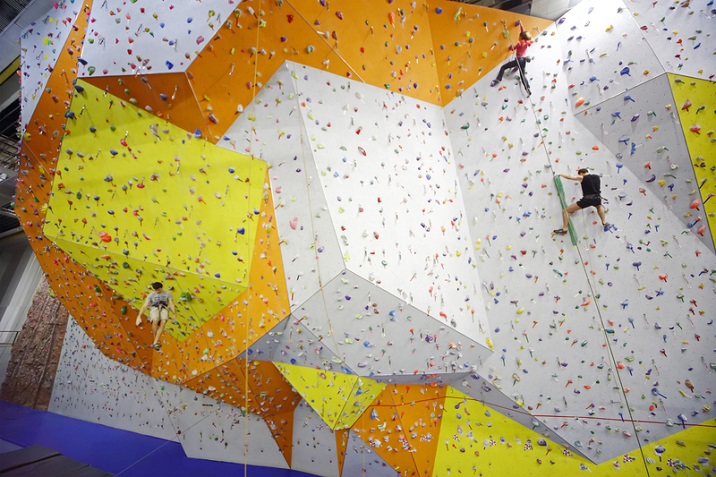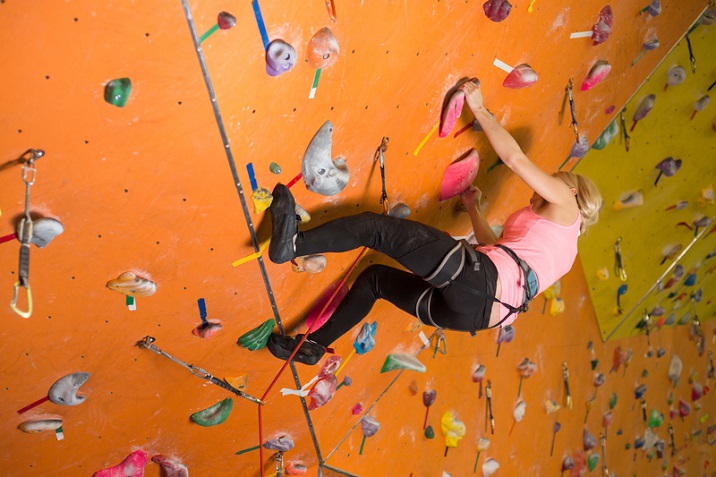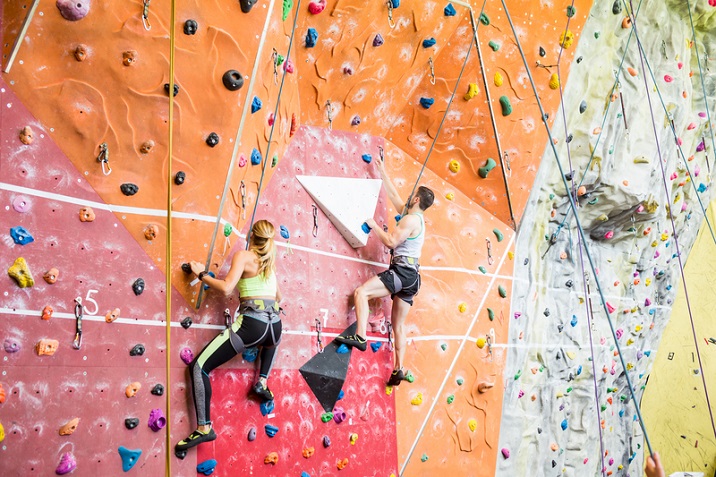Competitive Climbing – How to Play?
In case of competitive climbing, the rules and regulations of the sport vary from each other based on the type of competition. There are three main categories which are Lead climbing, Speed climbing, and Bouldering. Rules and regulations as well as the gaming procedure of these categories are explained below.
Lead Climbing
Lead climbing is considered as the most common type of competitive climbing sport. In lead climbing, climbers ascend a long and difficult route that is designed by the route setters. Here first the climber attaches himself/herself to an elastic climbing rope and then ascend through the route while placing protections periodically to the face of the route.

The climber must have a belayer as the helping person. The belayer has multiple tasks including holding the rope in case of falling as well as paying out the rope to the climber when he/she moves with the help of a belaying device.
During the climb, the climber places protections periodically through the route which includes clipping to pre-placed bolts and pitons or using different removable protection devices into the cracks or other features. Distance between these protections mostly stays between 6 to 12 feet.
Scoring
The performance of the climber is determined by the highest hold point he/she has reached. Again the hold point has to be controlled, i.e., the climber has to achieve a stable position on that hold. There are three rounds in a lead climbing competition. The first round is the qualifier round where the players are not isolated and they can watch other players climbing before their own attempt.

In the semi-final and final rounds, the climbers has to go for isolation where they can’t see other players climb and before their round, they are allowed to go for “observation” where they are allowed to see the climbing route for better planning that stands for 6 minutes.
The judgment is mostly based on the climber’s performance, which includes route selection to time management. The climber has to finish the route in the minimum time. In case of tie in the final, scores from the previous rounds are taken into consideration. During the competition, 26 climbers get selected for the semi-final round whereas 8 climbers make it to the final.
Speed Climbing
In lead climbing, the performance and efficiency of the climber is taken into consideration. In case of speed, the speed at which the climber climbs through the route is the only factor for evaluation. Here the climbers climb a vertical piste which is slightly over hanged with belaying from the top. The governing body has created a standard wall design for speed climbing.

Speed climbing can be played either individually or in a team. Each team consists of three members. Here the climbing wall is divided in to four equal columns where initially two players from each side compete against each other to climb fast and hit the button on the top. Clicking the button on the top enables the 2nd player from each team to again move in other columns.
In this way, once the second player hits the button on the top, it enables the third player from each team to climb to the top in a different row than the second player to hit the button. The final score is calculated by taking all the individual team player’s performance into count.
The climbing time in the game is evaluated by mechanical-electric timing which is very much accurate even up to 0.01 second. When a climber hits the top button on the top of the route, the climbing time is decided based on which the winner is declared.
Bouldering
In case of bouldering, no ropes or other typical climbing equipment are used. The routes followed in case of bouldering are shorter as compared to other climbing categories, which are generally below 20 feet in height. Similarly, the routes are more difficult as compared to other categories with limited time for completion. Here bouldering mats are placed below in order to prevent injuries during a fall.

The players are mostly dependent on proper and secure foot works. In order to avoid sweating and for better grip, they use dry chalk in their hands. Here the climber can attend the same route more than once unlike lead climbing. In case of bouldering, the scores are given based on the number of routes the player is climbing as well as the number of attempts he/she takes for that.
In case the player fails to reach the final finishing hold. The scores will be provided based on a particular hold called bonus hold that the player has cleared. The placement of the bonus hold is decided by the route setter. In bouldering competitions, 20 athletes are selected in the semi-final from which 6 make it to the final round.
